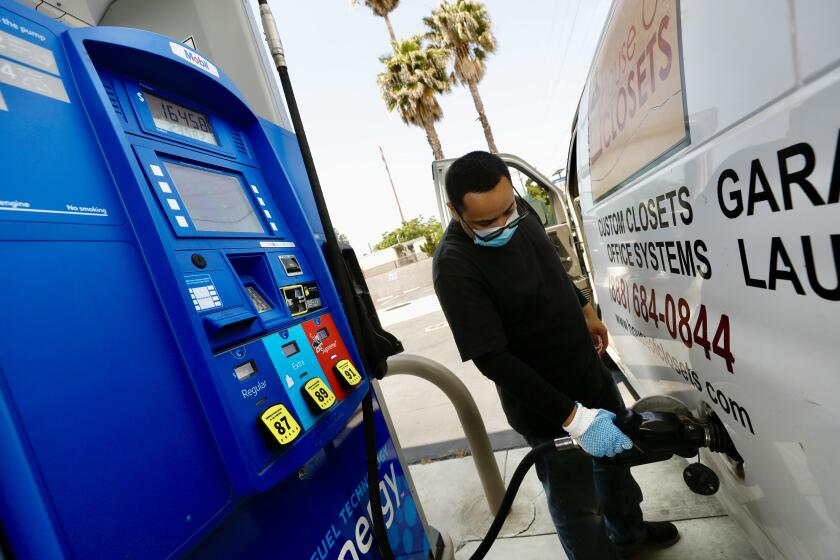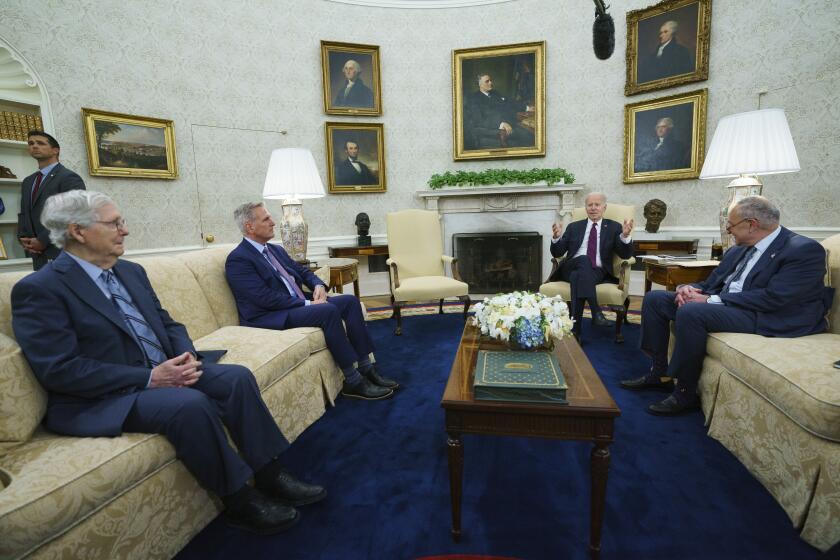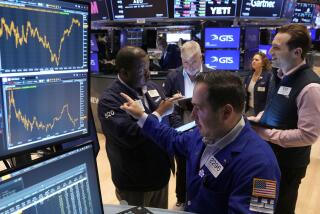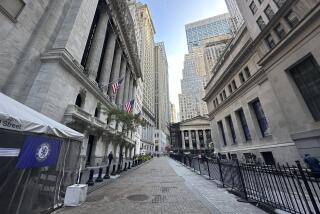Wall Street rises with hopes for pause to rate hikes
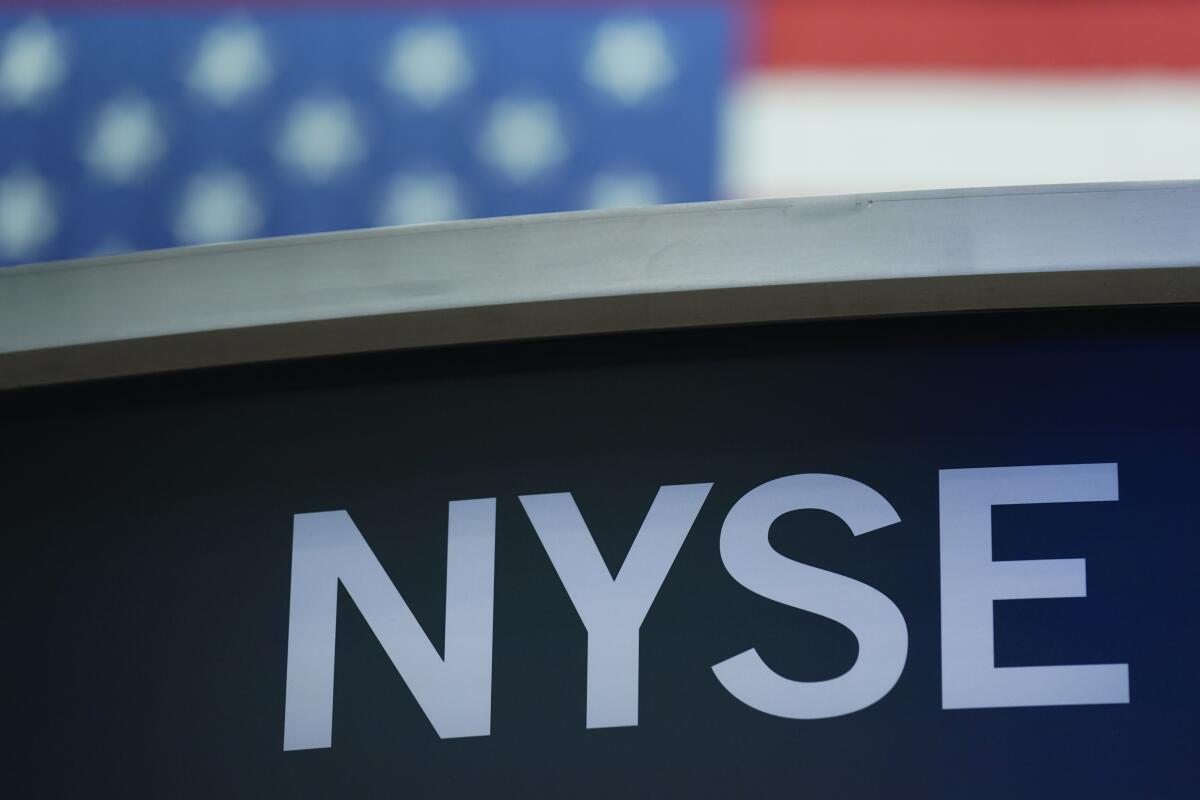
Wall Street rose Thursday with hopes that the Federal Reserve may soon take it easier on its hikes to interest rates.
The Standard & Poor’s 500 rallied 1% after a suite of reports painted a picture of a split U.S. economy. The job market remains solid, but manufacturing is weakening and retailers are seeing shoppers under pressure. Altogether, investors saw the data pushing the Fed toward not hiking rates at its meeting in two weeks, which would be the first time that’s happened in more than a year.
The Dow Jones industrial average gained 153 points, or 0.5%, while the Nasdaq composite led the market with a 1.3% jump. It’s full of technology companies and other high-growth stocks that tend to benefit most from lower rates.
One positive for the market came late Wednesday when the House of Representatives approved a deal to prevent a possibly catastrophic default on the U.S. government’s debt. But that was what Wall Street expected, and only a trip-up for the deal before it gets signed by President Biden would be likely to cause big waves for stocks.
Investors are more concerned about whether the economy will fall into a recession before inflation recedes enough to convince the Federal Reserve to ease up on interest rates.
Mixed signals — including layoffs, strong job growth and lingering inflation — have clouded the U.S. economic outlook.
Reports on Thursday gave a clouded view. One said that fewer workers applied for unemployment benefits last week than expected, while another suggested employers increased their payrolls last month by more than forecast.
That’s good news for workers and the overall economy, which has been slowing under the weight of much higher interest rates. But a strong job market could also keep pressure up on inflation, pushing the Fed to keep rates high.
On the flip side, manufacturing is continuing to get hit hard, in part by higher interest rates. A report from the Institute for Supply Management said manufacturing shrank for a seventh straight month in May. The contraction was worse than both the prior month and what economists expected.
After the reports, traders were largely betting on the Fed holding rates steady at its next meeting in two weeks. That’s something a Fed official a day earlier hinted may happen, though Fed Gov. Philip Jefferson also said that wouldn’t necessarily mean the end of hikes.
After that, traders are split on whether the Fed will follow up with another rate bump at its next meeting in July. That’s key because high rates work to lower inflation by slowing the economy and hurting prices for stocks and other investments.
Debt ceiling negotiations between President Biden and Republican leaders are sputtering toward the brink of an unprecedented federal default, and perhaps beyond.
Tech and other high-growth stocks tend to get hit hardest by higher rates, and hopes for a pause to hikes had several tech giants leading the way on Wall Street.
Apple, Microsoft and Amazon all rose at least 1.3%. Their movements carry extra weight on the S&P 500 because they’re some of the most valuable on Wall Street.
A report on Friday could further sway the Fed and its chair, Jerome Powell. It’s the U.S. government’s comprehensive report on the job market.
For as much as Wall Street hopes the end to rate hikes is near, it may be getting ahead of itself, said JJ Kinahan, chief executive of IG North America.
“The market’s been like a spoiled child,” he said. “Every six weeks, it stamps its feet and says, ‘Not this time!’ And every time, Powell says, ‘We’re going to continue to do this,’ and the market says, ‘I can’t believe they did this.’”
So far, the economy has held up despite a long list of worries because of a still-strong job market and resilient spending by consumers. But reports from several retailers suggested shoppers are feeling more pressure.
Dollar General dropped 19.5% after it reported weaker profit and revenue for the latest quarter than analysts expected. It said the economic environment has been more challenging than it expected, and it cut its financial forecasts for the full year. It tends to cater to lower-income households.
Macy’s, which also owns Bloomingdale’s stores, rose 1.2% after reporting better-than-expected profit but weaker revenue than forecast. It also slashed expectations for the year and said shoppers began to pull back starting in March.
Some of the enthusiasm surrounding Wall Street’s recent frenzy around artificial intelligence also cooled.
C3.ai gave a forecast for revenue this upcoming fiscal year that failed to wow Wall Street like Nvidia’s did last week. C3.ai tumbled 13.2%, though it’s still up 210% so far this year. Nvidia rose 5.1%.
Also on the winning end was Hormel Foods, which rose 5.1% after reporting stronger profit for the latest quarter than expected. Its brands include Skippy, Spam and Applegate meats.
All told, the S&P 500 rose 41.19 points to 4,221.02. The Dow advanced 153.30 points to 33,061.57, and the Nasdaq jumped 165.70 points to 13,100.98.
In the bond market, the yield on the 10-year Treasury fell to 3.59% from 3.65% late Wednesday. It helps set rates for mortgages and other loans that influence the economy’s strength.
The two-year Treasury yield, which moves more on expectations for the Fed, fell to 4.32% from 4.40%.
AP writers Yuri Kageyama and Matt Ott contributed to this report.
More to Read
Inside the business of entertainment
The Wide Shot brings you news, analysis and insights on everything from streaming wars to production — and what it all means for the future.
You may occasionally receive promotional content from the Los Angeles Times.
